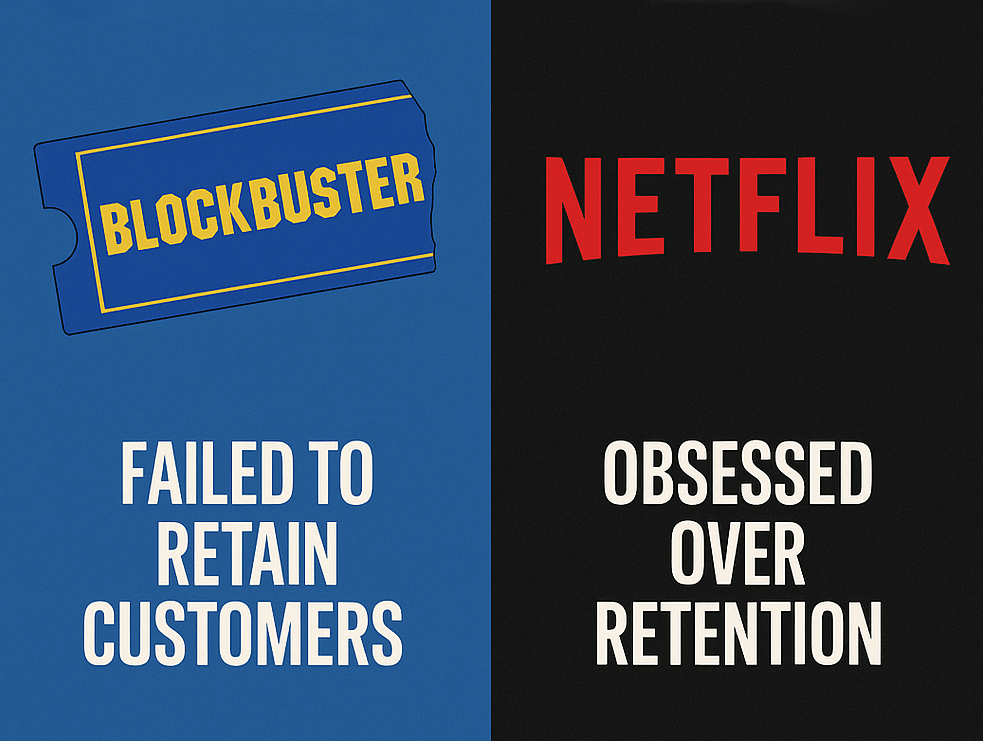Most businesses don’t die because they fail to acquire new customers.
They die because they fail to keep the ones they already have.
That slow leak of customers, better known as churn, is the silent killer of growth. It doesn’t make the same noise as a viral campaign or a record-breaking sales day, but over time it quietly drains revenue, erodes stability, and leaves businesses scrambling to plug holes they never measured in the first place.
Blockbuster: A case study in churn
Blockbuster once had everything: market share, stores on every corner, and global brand recognition.
But they missed one thing: shifting customer behavior.
They assumed people would keep driving to their stores every Friday night to rent DVDs. Meanwhile, customers started drifting, first to mail-order DVDs, then to streaming, then to any option that was easier than leaving home.
By the time Blockbuster noticed the shift, it was too late. Churn had been eating away at their customer base long before they officially closed their doors.
Netflix: A case study in retention
Now compare that to Netflix.
Netflix has always obsessed over retention. They understand that subscribers aren’t a vanity metric, they’re a recurring revenue lifeline. Every feature, from personalized recommendations to auto-play to push notifications, is designed to keep people engaged and coming back.
Their AI doesn’t just log what you’ve watched, it predicts what you’ll want next. When you log in, there’s always something waiting for you, tailored to your tastes.
That’s not luck. That’s a retention-first mindset.
The numbers don’t lie
Research shows that reducing churn by just 5% can increase profits by 25–95%. Yet most businesses still spend 10x more on acquisition than they do on retention.
It’s like pouring water into a leaky bucket and wondering why it never fills.
The lesson for businesses
If you’re not measuring churn, you’re already losing.
Retention isn’t optional. It’s the difference between Netflix and Blockbuster. Between thriving… and becoming a case study.




